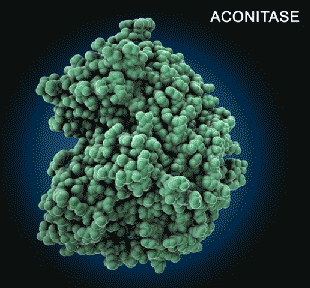Enzymatic Catalysis, Catalytic Mechanisms 9| Tulane
Enzymatic Catalysis, Catalytic Mechanisms
- General Properties of Enzymes
- Activation Energy and the Reaction
Coordinate - Catalytic Mechanisms
- Serine Proteases (pp. 342-347)
Learning Goals
- Give examples of various levels of substrate specificity, and explain specificity differences exhibited by serine proteases
- Give examples of reactions that utilize coenzymes NAD, FAD, Coenzyme A, and lipoic acid (metabolism lectures), and specify the role of the coenzyme
- Describe catalysis in terms of a reaction-coordinate energy diagram
- Classify enzymes by type of reaction
- Explain catalysis by enzymes in terms of chemical mechanisms
- Elaborate the catalytic mechanism of a chymotrypsin
- Explain divergent and convergent evolution
- Discuss the similarity of primary structure vs. tertiary structure in proteins as evidence supporting the existence of homology
Enzymes differ from chemical catalysts
- Higher reaction rates
- Milder reaction conditions
- Greater reaction specificity
- Capacity for regulation
How Do Enzymes Work?
- Enzymes accelerate reaction rates through the formation of weak bonds (hydrogen bonds, hydrophobic bonds, ionic bonds, van der Waals interactions) between the enzyme and the substrate.
- Enzymes use the energy from the formation of these weak bonds help arrange the substrate in a position favorable for a chemical reaction. Catalysis by Transition- state Stabilization Rate 315 times faster when R=CH3 than when R=H
Specific
Geomitric complementarity and electronic complementarity contribute the specific of the enzyme.
- Stereospecific: target into one kind of chiral only.
- Geometric Specificity: identities of the chemical groups on their substrates.
Transition State Analogues
- The transition state is a “fleeting molecular moment” where events such as bond breakage, bond formation, and charge development have proceeded to a point at which decay to either substrate or product is equally likely.
- Stable molecules designed to resemble this transition state are called transition state analogues. They often bind to enzymes more tightly than either the substrate or the product. This principal has been used to increase the effectiveness of pharmaceuticals.
- Most of the HIV protease inhibitors used to treat AIDS are transition state analogues.
Transition-state Analogs
The properties of enzymes control the fate of most cellular metabolites
The ~ 500 reactions that comprise human metabolism are all catalyzed by enzymes.
Lehninger, Figure 15-1
Enzymes can be classified according to the reactions they catalyze
Oxidation states of biological carbon molecules
Oxidation states of biological carbon molecules
Oxidation states of biological sulfur
Biological oxidation-reduction reactions utilize mobile or protein-bound electron
carriers Oxidized Forms
NAD+
NADP+
FAD
FMN
Reduced Forms
NADH
NADPH
FADH2
FMNH2
NAD+ Nicotinamide Adenine Dinucleotide
NADP+ Nicotinamide Adenine Dinucleotide
Phosphate
FAD Flavin Adenine Dinucleotide
FMN Flavin Mononucleotide
Electrons on NADH and FADH2 are used primarily to generate ATP via electron transport and oxidative phosphorylation. Electrons on NADPH are used to provide reducing equivalents during synthetic reactions.
- Oxidoreductases
catalyze redox reactions Lactate dehydrogenase (LDH) is a glycolytic enzyme present in a number of different tissues. LDH isozymes (enzymes with different structures that catalyze the same reaction) are sometimes measured in serum as an indicator of cell damage. - Transferases catalyze the transfer of a functional group from one molecule to another
Hexokinase is an transferase that transfer a phosphate from ATP to a hexoses (six-carbon sugars), forming hexose-6-phosphate. In most organisms, glucose is the most important substrate and of hexokinases, and glucose-6-phosphate is the most important product. - Hydrolyases catalyze the transfer of a donor group to water. Water is added and 2 molecules are formed from 1.
Glucose 6-phosphatase is a hydrolase in the gluconeogenic pathway that removes a phosphate group from the C-6 hydroxyl group of glucose to form glucose and inorganic phosphate. - Lyases add or remove elements of carbon dioxide, ammonia or water (without making two molecules from one).
Fumerase is an lyase enzyme in the Tricarboxylic Acid Cycle. Note that water is added, but this enzyme does not make 2 molecules from one. - Isomerases are enzymes that catalyze intramolecular rearrangements. All the atoms in the substrate are also present in the product, just in a different configuration.
Phosphoglucomutase is an isomerase that interconverts glucose 6-phosphate and glucose 1- phosphate. This enzyme is required for the synthesis of glycogen and complex carbohydrates. - Ligases catalyze synthetic reactions where 2 molecules are joined at the expense of a “high energy phosphate bond” , usually ATP or GTP. No part of the ATP or GTP ends up in the product.
Pyruvate carboxylase is a ligase important in the gluconeogenesis. It is also used to replenish intermediates in the Tricarboxylic Acid Cycle
Substrate Specificity
- Lock-and-key model refers to complementarity between enzymes and substrates
- Induced fit refers to conformational change upon substrate binding – accommodation of multiple substrates
Example of “high” specificity (stereospecificity)
3-point- attachment results in stereospecific product
Example of “low” specificity (geometric)
Example of enzyme that uses a coenzyme/cosubstrate
MECHANISMS OF CATALYSIS
- Acid-base Catalysis
- Covalent Catalysis
- Metal Ion Catalysis
- Catalysis by Transition- state Stabilization
Rate 315 times faster when
R=CH3 than when R=H - Catalysis by Proximity and Orientation
- Catalytic triad of chymotrypsin and other serine proteases
ES complex - Serine protease mechanism
ES complex Tetrahedral intermediate
Enzymatic Catalysis, Catalytic Mechanisms 9| Tulane
https://karobben.github.io/2021/10/05/LearnNotes/tulane-biochem-9/









